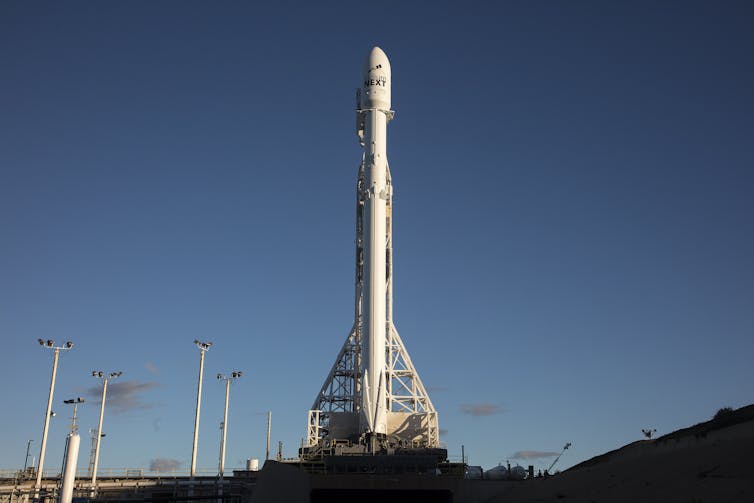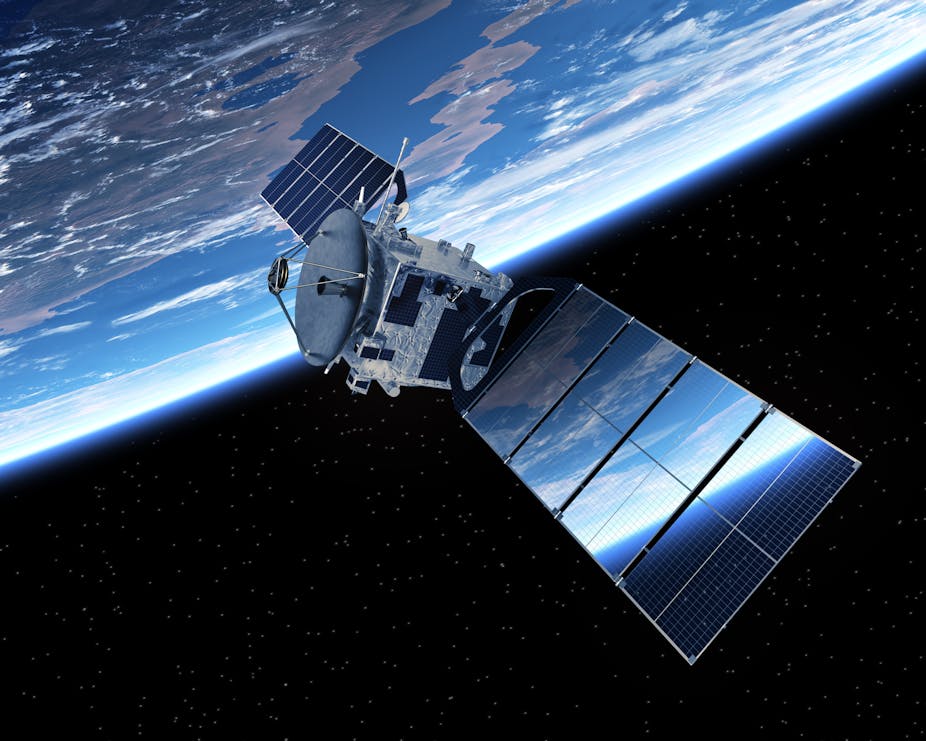The Iridium-7 mission has successfully launched from the Vandenberg air force base in California, placing the latest ten satellites from the American company’s second-generation network into orbit. Deployed by Elon Musk’s SpaceX, Iridium now has 65 new NEXT satellites in the sky, just one away from the intended total. The plan is to be fully operational by the autumn.
Iridium provides satellite phone services and other communications support to everyone from the US government to airlines, from mining companies to mountaineers. With around 500,000 billable subscribers on the books, the company aims to drive that upwards with the new network. It will offer enhanced connectivity and broadband speeds for a whole range of customers eager for secure data and communications in hard-to-access areas. It is also seen as having an important role to play in helping machines talk to one another in the Internet of Things, including driverless cars.
Iridium’s big selling point is that it is the only provider that offers truly global coverage. It competes with the likes of US rivals Globalstar and Orbcomm; and the UK’s Inmarsat, which leads the market with a much smaller network of satellites at a higher orbit, whose attraction is ultra-reliability if you are in the right location. Iridium believes its NEXT offering will enable it to properly compete against Inmarsat on broadband for the first time.

The company was set up in the late 1990s with heavy backing from Motorola to launch its original fleet of 77 satellites, and later bailed out by the US government when it ran out of money. With that first network approaching the end of its operational life, Iridium raised several billion dollars to buy 81 new satellites (the remaining 15 are spares). Iridium has already started taking the old satellites out of orbit.
Upstart alert
Alongside Iridium and the other established providers, a new generation of space companies is starting to emerge. The cost of launch is decreasing at a faster pace than at any time in the history of space exploration. Where traditional launch providers charge between US$14,000-17,000 per kg to put satellites in low Earth orbit, the Falcon 9 from Space X can do it for just under US$5,000. This will drop even further thanks to the emergence of launch systems that can be fully reused, like the SpaceX Falcon Heavy and also Falcon 9 Block 5, which was used for the first time a few days ago.
Soon to be joined by Jeff Bezos’ Blue Origin rocket, the cost per kg could drop below US$2,000 in the near future. And with the development of smaller satellites and horizontal launch systems, such as the one proposed by Virgin Orbit, it could soon come down to even a few hundred dollars per kilo.
The second crucial change in the offing is the miniaturisation of satellite technology. This promises a shift away from the traditional architecture of large, heavy and expensive satellites like the Iridium NEXT and Globalstar networks towards “mega constellations” of much smaller devices. This threatens to have a major impact on the satellite broadband business.
Until now, satellite broadband has had significant disadvantages compared to Earth-based alternatives like ADSL and fibre optic. Due to the distance the signals have to travel and the weather, there are issues with latency and sluggish responses, which is problematic for the likes of gamers. The speed of satellite internet is substantially slower than even the cheapest cable-based provider. It’s currently seen as little more than a back-stop in rural or hard-to-access areas.
The vision is to use mega constellations of satellites to disrupt the domestic and home broadband market with affordable, low-latency, global internet coverage at speeds comparable to ASDL. At the forefront is OneWeb, a US-based start-up launching the first in its series of satellites later this year. It hopes to have “fully bridged” the divide with cable-based broadband by 2027.
Where Iridium NEXT uses 66 satellites weighing 860kg each, OneWeb is starting with over 640 satellites, each weighing 150kg. Other companies, meanwhile, such as the UK’s Sky and Space Global, are proposing to use a constellation of 200 very small satellites, each only weighing 10kg, to provide voice or text communications on mobile phones to people in hard-to-access areas.
The picture becomes even more competitive when the ambitious plans of SpaceX are factored in. Elon Musk is looking to do much more than be a launch provider. In 2016, SpaceX announced a plan to launch a mega constellation of over 4,000 satellites providing global high-speed broadband by the mid-2020s.
Satellites galore
There are currently 1,738 active satellites in orbit. Mega constellations will increase that by an order of magnitude in the next few years. As well as the strain on bandwidth, the Earth’s orbit is going to become much more congested.
This raises important environmental questions. Some operators such as OneWeb have made encouraging noises about managing the end of life of their satellites, but serious concerns remain. There’s an opportunity for the next generation of space entrepreneurs to be true pioneers by establishing a sustainable way of working in space.

This aside, the industry’s growth potential looks staggering. A recent report from Morgan Stanley predicted the space industry would grow from US$350 billion in 2016 to over US$1.1 trillion by 2040. But one vital question is, where will it leave incumbents like Iridium?
These players have crucial advantages: above all, they are there. They have attracted the investment and have put the hardware into space. They offer an established platform based on reliable, proven technology; many customers will prefer that over cheaper, experimental solutions.
Iridium argues that while it may not be able to offer broadband speeds to compete with new arrivals, its global coverage means it will continue to play a vital role offering back-up when other services fail. It also points out that its satellites operate on the L-band frequency, whereas the likes of OneWeb will be on the less reliable Ku-band.
Whether the new arrivals and incumbents manage to carve out different segments of a bigger market will be fascinating to watch in the coming years. For my money, reliability will always trump everything else. But whatever happens, big changes are coming: the satellite communications business will look entirely different in ten years.

